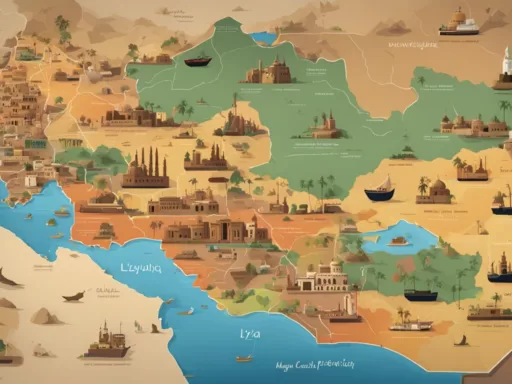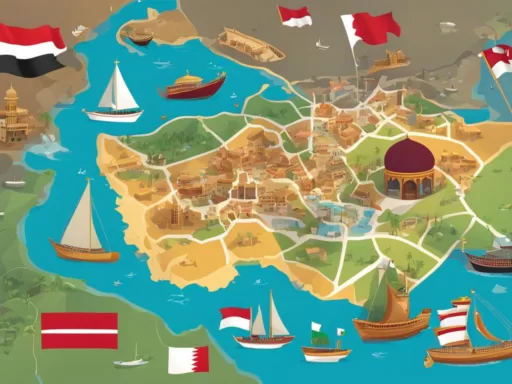Imagine a rainbow of languages serenading the airwaves of a single nation. This is the auditory spectacle in Zimbabwe, where an astonishing sixteen official languages harmonize in a landscape rich with linguistic diversity. The 2013 Constitution of Zimbabwe may read like a directory of cultures, recognising languages such as Chewa, Chibarwe, English, Kalanga, Shona, and more, as cornerstones of the country’s cultural heritage. With no language census held, approximations suggest that the multilingual nature of this African nation is as intricate as the patterns on traditional Zimbabwean textiles.
Yet, this symphony is not merely a chorus of traditional vernaculars; it has additional accents—migrant languages, including French and Punjabi, and a breadth of sign languages, with American Sign Language among them. This blend of communication forms makes the languages spoken in Zimbabwe a compelling exploration into the heart of the nation’s cultural diversity.
Key Takeaways
- Zimbabwe boasts an incredible 16 official languages, showcasing its commitment to linguistic inclusivity.
- The melodic interplay of languages in Zimbabwe echoes the country’s colorful cultural diversity.
- While English serves as the lingua franca, indigenous languages, sign languages, and migrant dialects add depth to the nation’s linguistic identity.
- A dynamic approach to language reflects in everyday life, from education to business, in contemporary Zimbabwe.
- Statistics on language speakers are approximations as Zimbabwe has not conducted a census focusing on language demographics.
- The nation’s cultural tapestry is further enriched by the presence of various sign languages, including American Sign Language.
The Rich Tapestry of Zimbabwe’s Official Languages
Zimbabwe’s commitment to linguistic inclusion took a monumental leap with the 2013 Constitution, an embodiment of the nation’s linguistic diversity. Moving beyond the English-dominant policies of the colonial era, this legal document stands as a testament to the country’s multilingual ethos.
Recognizing the Multilingual Constitution
The Constitution of Zimbabwe, a beacon for the multilingual Constitution, significantly altered the linguistic landscape, setting a precedent with its official recognition of 16 languages as the official languages of Zimbabwe. This recognition not only represents the acknowledgment of language diversity but also the determination to return linguistic agency to the Zimbabwean people.
From Colonial English to a Multitude of Tongues
The historical emphasis on English during colonial rule is now complemented by a variety of tongues reflective of Zimbabwe’s language diversity. It’s a remarkable journey from a single-language focus to a celebration of linguistic plurality, uniting multiple cultures under a single national identity.
| Official Language | Region Commonly Spoken | Notes on Language |
|---|---|---|
| Shona | Throughout Zimbabwe | Majority language with various dialects. |
| Ndebele | Matabeleland region | Second most spoken language sharing roots with Zulu. |
| English | Nationwide | Official business and education language. |
| Tonga | Northern Zimbabwe | Spoken by the ethnic Tonga community. |
| Kalanga | Western Zimbabwe | Related to Shona with distinct linguistic features. |
| Nambya | Hwange District | Historically linked to the Rozvi Empire. |
| Chewa | Eastern Zimbabwe | Part of the Bantu language family, also spoken in Malawi. |
Zimbabwe’s Linguistic Majority: Shona and Ndebele
Delving into the rich linguistic fabric of Zimbabwe, one cannot overlook the predominance of Shona and Ndebele. These Bantu languages form the backbone of the nation’s cultural expression and communication. A deeper understanding of these languages offers insight into their historical significance and current role in society.
The Historical Roots of Shona
The Shona language, with its variants including Manyika and Ndau, is an integral part of Zimbabwe’s heritage. Shona’s development into the most widely spoken language in Zimbabwe reflects the complex interweaving of dialects and sociocultural evolution. Its standardized form bridges various dialects to foster unified communication among the majority of Zimbabweans who speak it.
Ndebele: A Language with South African Ties
Ndebele stands out with its South African Zulu roots, hinting at the migrations that shaped the language and the region. Although fewer in number than Shona speakers, the Ndebele-speaking community is vibrant and maintains linguistic correlations with their counterparts across borders, notably in Botswana, preserving a cross-cultural connection vital to the region’s history.
| Language | Percentage of Zimbabwean Speakers | Geographical Spread |
|---|---|---|
| Shona | Approximately 87% | Mainly central and eastern Zimbabwe |
| Ndebele | Approximately 13% | Primarily southwestern Zimbabwe |
As pillars of Zimbabwe’s linguistic landscape, Shona and Ndebele not only offer a means of everyday communication but also encapsulate the nation’s story, from ancient kingdoms to modern-day cultural dynamics. The preservation and promotion of these vital Bantu languages play a crucial role in maintaining Zimbabwe’s rich and diverse linguistic heritage.
English in Zimbabwe: A Lingua Franca for Commerce and Education
In Zimbabwe, the English language emerges as a cornerstone for various sectors, transcending its colonial roots to become a critical facilitator in both commerce and education. English serves not just as a second language for the majority of Zimbabweans but also as the primary language deployed in governmental and business dealings, as well as in academic institutions.
The imprint of English in Zimbabwe’s educational framework especially stands out, as the language is both a subject in its own right and the medium of instruction for other subjects. Its widespread use is a testament to its perceived utility and prestige, reflecting an intricate balance between preserving local languages and ensuring global competitiveness.
English is a bridge to global commerce and educational excellence in Zimbabwe, serving as an indispensable tool for communication and advancement.
- Government: English is the official language used in legislation, judiciary, and international diplomacy.
- Business: English enables entrepreneurs to engage in trade and transactions both within Zimbabwe and internationally.
- Education: It is the primary medium of instruction from primary to tertiary levels, crucial for academic development and research.
The ubiquity of English in Zimbabwe’s commerce and education underscores the country’s ongoing engagement with global trends and its commitment to empowering its citizens through language proficiency.
Languages Spoken Zimbabwe: A Dive into Language Diversity
Zimbabwe is a country that boasts an impressive array of traditional and indigenous languages, with a richness that extends far beyond its main tongues. Among these, three vibrant languages stand out: Chewa, Chibarwe, and Kalanga. Not only do they add to the cultural fabric of the nation, but they also play an essential role in connecting communities and passing down traditions from generation to generation.
The Vibrancy of Chewa, Chibarwe, and Kalanga
Chewa, also known as Nyanja, is the third most widely spoken indigenous language in Zimbabwe. With its origins traced back to the Bantu people, Chewa is a testament to the historical exchanges within the region. Meanwhile, Chibarwe, spoken near the borders with Malawi and Mozambique, serves as a linguistic bridge between countries. Kalanga, predominantly found in the western regions of Zimbabwe and neighboring Botswana, enriches the linguistic landscape with its unique lexicon and idioms. These traditional languages in Zimbabwe are not simply means of communication; they are vessels of cultural identity and heritage.
Koisan, Nambya, Ndau: The Lesser-Known Vernaculars
The Koisan language, with its distinguishing click consonants, reveals an ancient history that predates many modern languages in Southern Africa. Nambya and Ndau, holding significant numbers of speakers in Zimbabwe and across its eastern border, continue to thrive in daily use and social rituals. Nambya, associated with the Hwange region, and Ndau, recognized in the southeastern parts of the country, illustrate the diversity of Zimbabwe’s language portfolio. These indigenous languages Zimbabwe not only color the nation’s daily conversations but also embody the multicultural spirit of its people.
Understanding the intricacies of these traditional languages in Zimbabwe reveals more than linguistic patterns; it uncovers social bonds, historical migrations, and deep-rooted cultures that contribute to the nation’s identity. Through the voices of Chewa, Chibarwe, Ndau, and others, we gain a glimpse into the collective soul of Zimbabwe—a nation proud of its linguistic diversity.
The Influence of Migration on Zimbabwe’s Language Landscape
The ebb and flow of human movement over time have woven a profound fabric of languages within Zimbabwe, providing a dramatic illustration of how migration shapes a country’s linguistic identity. The introduction of immigrant languages has made its mark, revealing the nuances of cultural diversity that enrich the nation’s character.
Migrant Languages: The Impact of Global Cultures
Contributing to the intricate mosaic of Zimbabwe language diversity, languages such as French, Portuguese, Hindi, and Punjabi reflect the global migration patterns that intersect with the local culture. These tongues, spoken by various immigrant communities, bring with them rich traditions and perspectives, which coalesce into Zimbabwe’s melting pot of dialects and accents, enhancing the nation’s cultural tapestry.
Preserving Indigenous Voices in a Modern World
Despite the increasing prevalence of immigrant languages, there persists a steadfast effort to sustain the indigenous linguistic heritage. Languages like Tjwao—a distinctive voice within the Khoe language group—symbolize the depth of Zimbabwe’s cultural roots. Though endangered, these native dialects represent an invaluable link to Zimbabwe’s past, informing and enriching the contemporary national identity.
Amidst the waves of global influence, Zimbabwe’s endangered languages hold steadfast, offering a resonant reminder of the nation’s resilient spirit and diverse origins.
Living Languages of Zimbabwe: Indigenous and Endangered
The vibrant linguistic landscape of Zimbabwe is marked by a wealth of indigenous languages, many of which now tiptoe on the edge of silence. As guardians of an ancestral heritage, the nation grapples with the plight of these endangered languages, navigating the fragile path of language survival. In the quest to bolster the voices of these living languages, the community’s effort reflects a steadfast commitment to cultural preservation and acknowledgment.
The Struggle for Language Survival: Tjwao and Tswa
In the remote heartlands of Zimbabwe, the whispers of Tjwao hang in the balance with less than two dozen fluent speakers remaining. Sharing this precarious state is Tswa, whose speakers are also dwindling rapidly. These languages, part of the woven tapestry that is Zimbabwe’s cultural identity, are in the throes of a fierce battle against extinction.
Revitalizing the Voices of Kunda and Lozi
Despite the challenges, there is hope on the horizon for languages such as Kunda and Lozi. Although they count only a small number of speakers, efforts to document, teach, and promote these languages speak to a profound respect for the diversity that each distinct vernacular brings to the nation’s cultural fabric.
| Language | Speaker Population | Preservation Efforts |
|---|---|---|
| Tjwao | Less than 20 | Documentation and recording |
| Tswa | Endangered | Community-led language classes |
| Kunda | Small community | Development of teaching materials |
| Lozi | Limited speakers | Cultural festivals and events |
The ongoing dedication to these indigenous languages of Zimbabwe is an inspiring testament to the resilience and commitment of those striving to keep their ancestral words alive. It is a challenging journey but one that holds the promise of linguistic revival and the continuance of Zimbabwe’s rich legacy for future generations.

Zimbabwe’s Educational Policy and Language Instruction
Zimbabwe’s commitment to linguistic diversity is reflected in its educational policy, where language instruction takes center stage. The policy seeks to promote a multilingual teaching approach, grounded in the principles of inclusivity and cultural recognition. By integrating a curriculum that is responsive to the linguistic make-up of the student body, the educational system aims to not only impart knowledge but also to foster a sense of identity and community among learners.
Early Childhood Education: Embracing Mother Tongues
In the sphere of early childhood education, Zimbabwe’s educational policy has made significant strides by underscoring the importance of mother tongue instruction. This approach serves as a cornerstone for facilitating a smoother transition into the realm of formal education, while simultaneously validating the linguistic heritage of each child. As a result, young learners are provided with a solid foundation on which to build their academic pursuits, nurturing cognitive and linguistic development in a familiar linguistic environment.
The Shift Towards Multilingual Teaching Materials
The move towards multilingual teaching resources is a transformative step in Zimbabwe’s educational landscape. By developing teaching materials in all 16 official languages, inclusive education becomes more than a policy statement – it unfolds as a practical reality within classrooms. This endeavor not only caters to the diverse needs of the student population but also stands as a testimony to the country’s dedication to educational equality and the preservation of linguistic diversity.
| Language | Usage in Early Education | Teaching Materials Availability |
|---|---|---|
| English | Widely used as a medium of instruction | Extensive |
| Shona | Integrated in mother tongue instruction | Significant |
| Ndebele | Used in regions with Ndebele speakers | Moderate |
| Other Indigenous Languages | Supported in early primary education | Developing |
Initiatives like UNICEF’s Early Reading Initiative illustrate the profound impact that language-aware education policies can have on improving student outcomes. By incorporating the wealth of languages in Zimbabwe into the educational fabric from the earliest stages, the country is paving the way for a future that is both linguistically and culturally rich.
Overcoming Challenges in Implementing Language Policies

As Zimbabwe actively seeks to diversify and enrich its education system through comprehensive language policy implementation, several significant obstacles have surfaced. Key issues include insufficient resources to develop teaching materials in all indigenous languages and a continued emphasis on English, which is often seen as a more valuable language in terms of global communication and economic prospects.
To address these challenges, there are concerted efforts to bring the nation’s Education Act into harmony with the nuances of the 2013 Constitution. This entails a laborious but crucial reform of the curriculum, with a clear focus on fostering a robust multilingual education framework. The goal is to create a conducive learning environment that values all official languages and equips students with the linguistic skills necessary for a diverse and inclusive society.
- Creation of educational content in indigenous languages to promote inclusivity
- Alignment of instructional practices with constitutional language policies
- Enhancement of teacher training to handle a multilingual classroom effectively
In the midst of these changes, the government and educators are navigating a complex terrain of cultural considerations and practical constraints. However, the vision for a future where every Zimbabwean language has its rightful place in education continues to drive policy decisions and teaching innovations. This journey underscores a larger commitment to celebrating Zimbabwe’s linguistic diversity as a cornerstone of its variegated cultural identity.
The Cultural Significance of Language in Zimbabwe
The intricate mosaic of languages in Zimbabwe is not just a feature of societal norms but represents a profound window into the cultural significance and identity of its people. With each dialect and vernacular, there are stories that travel through time, embodying the unity and resilience that come from a complex history. As we delve into the rich linguistic fabric of this nation, we uncover the threads of connection that hold together its diverse communities.
Language as a Pillar of Identity and Unity
Language transcends communication in Zimbabwe, serving as a beacon of identity for its people. It stands as a testament to the shared experiences and collective memory, creating a foundation for national unity. Through the adoption and promotion of multiple native tongues, Zimbabwe champions the intrinsic link between language and individual as well as collective identity.
How Language Reflects Zimbabwe’s Complex History
Zimbabwe’s rich lexicon mirrors the intricate layers of its past—from the era of archaic tribal kingdoms and their unique linguistic trademarks to the consequential years of colonial rule that introduced English, further enriching the country’s language tapestry. The emergence of a multilingual policy post-independence has served to preserve this legacy, reflecting the nation’s journey and its unwavering spirit.
| Language | Significance in Zimbabwean Culture | Historical Impact |
|---|---|---|
| Shona | Symbol of ethnic majority and cultural heritage | Evolved through regional dialects over centuries |
| Ndebele | Identity marker for the Ndebele people | Shares linguistic roots with the Zulu of South Africa |
| English | Lingua franca for official discourse | Evidence of colonial history and modern global influence |
| Minority Languages | Preserve local traditions and ways of life | Highlight pre-colonial cultural diversity |
Zimbabwe’s Record-Breaking Number of Official Languages
Zimbabwe’s monumental step in recognizing a record-breaking number of official languages not only showcases the nation’s commitment to linguistic diversity but also commands world recognition. The bold move towards multilingual governance is unprecedented, extending far beyond mere policy to influence the everyday lives of its citizens.
World Recognition for Linguistic Diversity
The global community has taken note of Zimbabwe’s unique linguistic framework, which stands as one of the most inclusive language policies worldwide. This has not only placed the country in the international spotlight but has also become a subject of intrigue and admiration among linguists and cultural associations globally, representing a monumental achievement in cultural preservation and recognition.

The Practical Implications of Multilingual Governance
With such a vast array of official languages, the practicalities of implementing multilingual governance in Zimbabwe are complex. From documentation to public services, the government faces the colossal task of encompassing all 16 languages to serve its diverse populace adequately. This section examines the impact of this policy on the nation’s administration and its people.
| Language | Scope of Use | Challenges | Potential Solutions |
|---|---|---|---|
| English | Official and educational | Limited native speakers | Enhanced language programs |
| Shona | Widely spoken, cultural significance | Dialectal variations | Standardized curriculum |
| Ndebele | Official and cultural | Geographic concentration | Broader educational outreach |
| Minority languages | Regional official use | Risk of extinction | Community-driven language preservation |
The commitment to incorporate all official languages into governance processes is not only a testament to the inclusive direction of Zimbabwe’s leadership but also poses a model for other nations to aspire towards in supporting linguistic diversity.
Modern Zimbabwe: Language Use in Media and Society
The landscape of Zimbabwe media is a vibrant reflection of the country’s ethos to uphold a multilingual mandate, creating a unique mosaic of societal language use that transcends traditional communication barriers. Recognizing the cultural implications of this diversity, broadcasters and publications have strategized to maximize reach and inclusivity.
English, Shona, and Ndebele dominate the airwaves and print, given their widespread understanding and reception. These languages serve not only as tools for news delivery but also as symbols of national identity and unity. This triad efficaciously garners the broadest demographic, ensuring that content is both accessible and engaging for the majority of Zimbabweans.
Language is not just a means of communication but also a carrier of culture and history, binding together the very fabric of society. It’s through the prudent use of language that Zimbabwean media reinforces the country’s rich heritage.
Aside from mainstream media, there are initiatives to incorporate other official languages to honor their cultural significance. Public discussions and programming in lesser-spoken languages continue to sprout, nurturing a sense of belonging among minority language speakers while safeguarding linguistic diversity.
| Language | Use in Broadcasting | Use in Print Media |
|---|---|---|
| English | National and international news, educational content | Major newspapers, academic publications |
| Shona | Local news, music, and cultural programming | Popular magazines, local community newsletters |
| Ndebele | Regional news, talk shows | Regional newspapers, cultural literature |
| Other Official Languages | Selected programming, special interest shows | Specialized publications, literary works |
The harmonious integration of multiple languages in both traditional and digital platforms underscores a commitment to embracing all facets of Zimbabwe’s societal fabric. With each broadcast and publication, Zimbabwe takes strides towards a more inclusive and representative media landscape, fostering a shared understanding and respect among its populace.
Conclusion
In the intricate mosaic that is Zimbabwe’s cultural heritage, the linguistic diversity stands front and center, painting a rich portrait of its society. The extensive array of languages that ripple through the daily lives of Zimbabweans form a vivid Zimbabwe cultural tapestry, which is not only a legacy of the past but also a stepping stone to a linguistically inclusive future. This cultural fabric is woven with threads of history, identity, and evolution, underscoring the importance of every language in the nation’s collective narrative.
The robust conversation surrounding the language policies and educational strategies symbolizes Zimbabwe’s serious commitment to valuing every speaker and their language. It’s a testament to the nation’s resolve to not just acknowledge the various tongues that echo within its borders but to actively incorporate them into the societal framework. This has profound implications for governance, education, and media, as they each adapt to a multilingual environment, ensuring that the beauty of diversity is echoed in every facet of Zimbabwean life.
Ultimately, the journey of languages in Zimbabwe is about more than just communication; it’s about maintaining a delicate balance between preserving tradition and embracing change. As we look at the country’s lingual landscape, it is imperative to appreciate the tenacity with which Zimbabweans are striving to ensure that every voice, irrespective of its linguistic roots, is heard and cherished. The continuing efforts to weave every linguistic thread into the national tapestry are what makes Zimbabwe a unique crucible of cultural and linguistic wealth.






